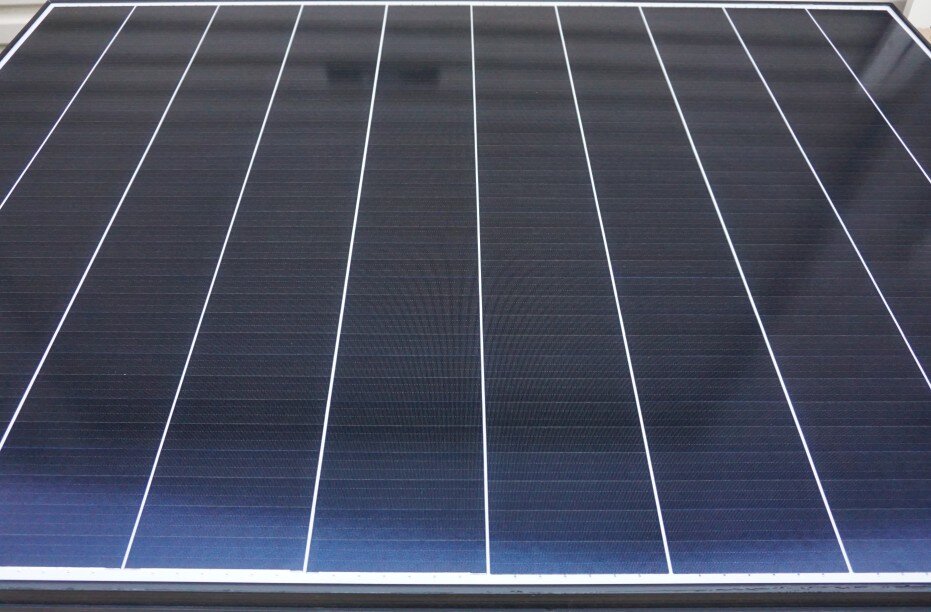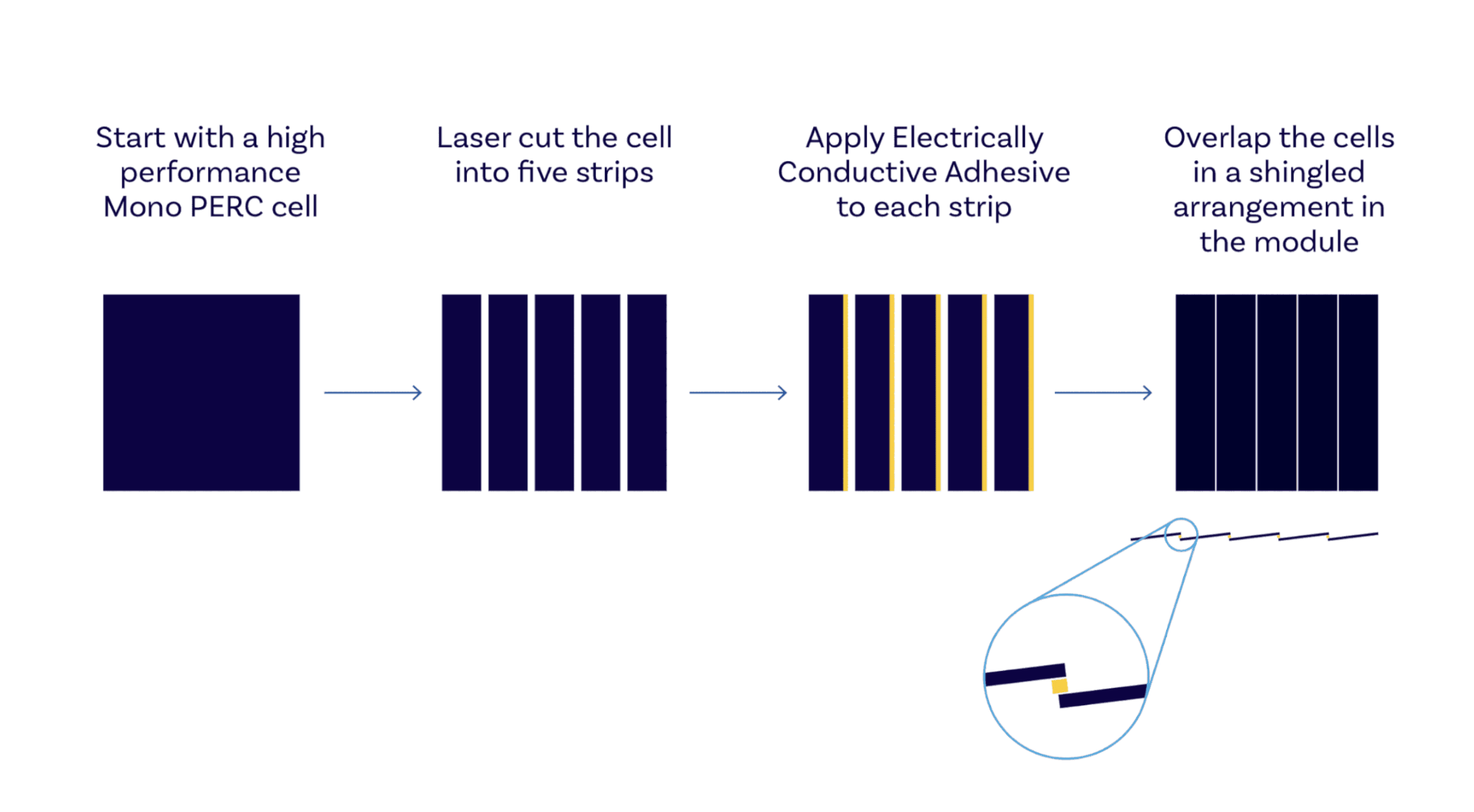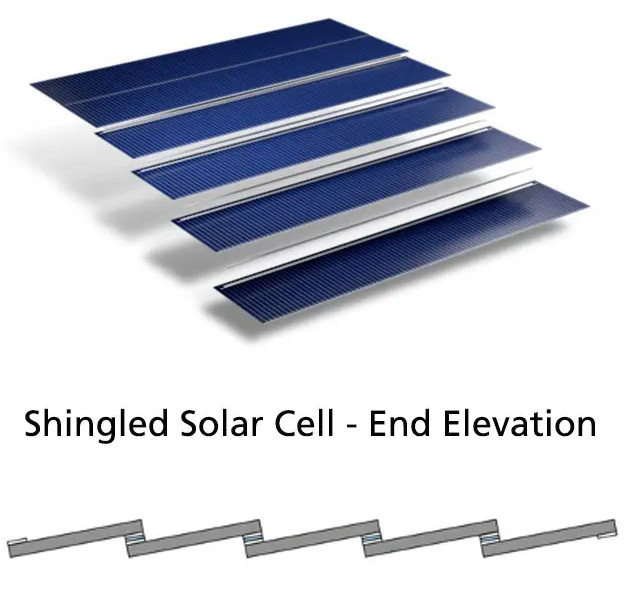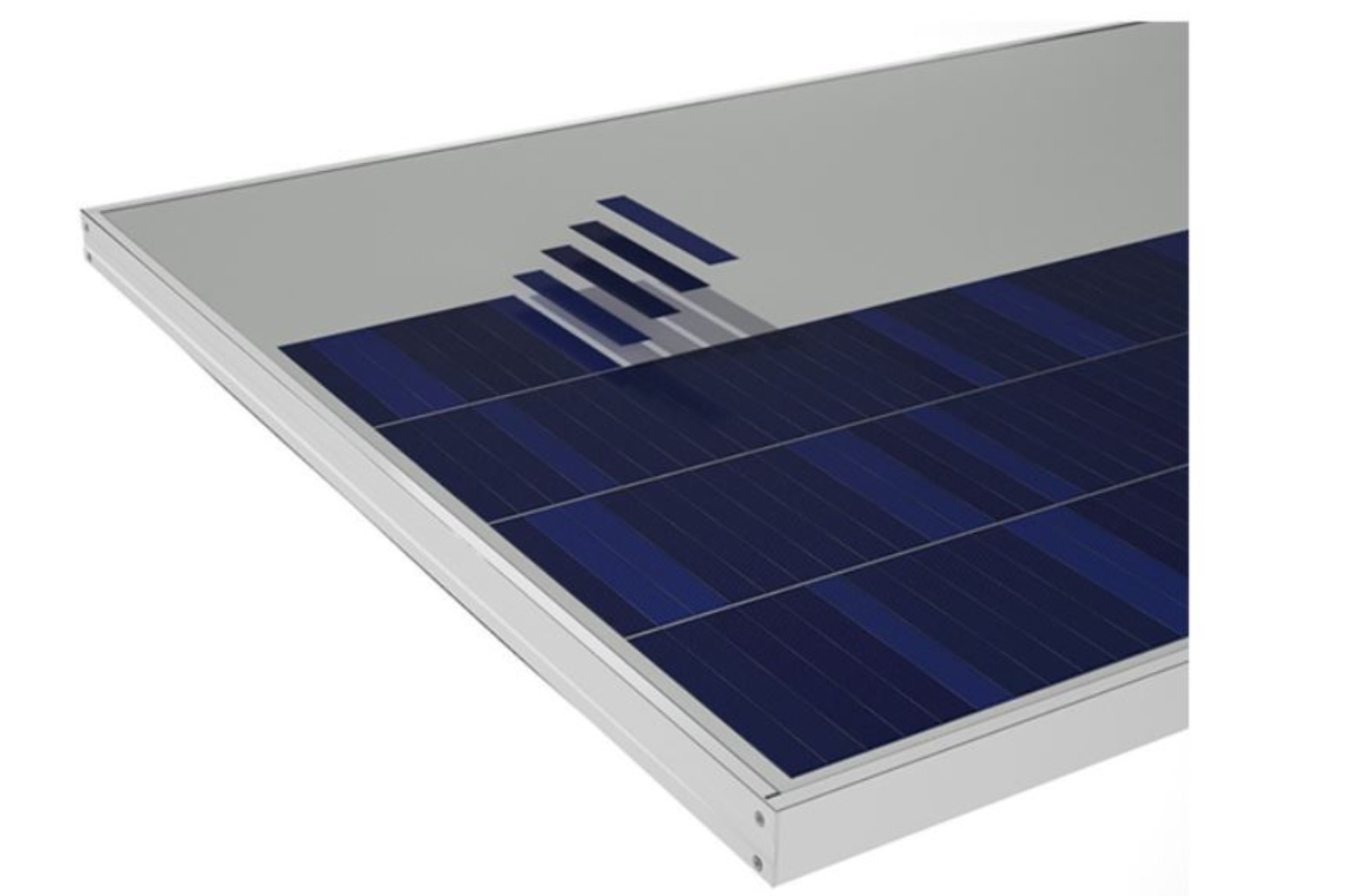• Available in 425W, 560W, All Black 425W and more.
• Perc Shingled Technology with high efficiency.
• Superior Temperature Coefficient.
• Built tough and tested under harsh conditions.
Model No. :
HG425U-SM12Nominal Power (Wp) :
425Max. System Voltage (V) :
1500Weight (kg) :
20.9Dimension (mm) :
1723x1134x30Number of cells :
256Cells type :
210mm PERC ShingledModule Color :
Full BlackModule Efficiency (%) :
21.8Certificate :
CE, TUVPREMIUM SHINGLED HG425U-SM12 425 watt solar panel with 21.8% module efficiency

Why Shingled Module is Premium?

Shingled technology eliminates traditional ribbon connection with shingles connected in series. By removing the soldered ribbons, the active area of the module is improved and thermal stresses are reduced – resulting in exceptional efficiency and reliability over standard interconnections. PREMIUM modules are based on the shingled technology which allow a higher cells density than standard half-cut modules.
Cells are cut in 5 or 6 pieces, the obtained “shingles” are assembled in strings by connecting front and rear edges of consecutive shingles with an Electrical Conductive Adhesive (ECA).
The ECA replaces the Copper Interconnection Ribbons usually soldered on solar cells, providing a flexible interconnection and avoiding the thermal/mechanical stresses on the Silicon – Copper interface.
Specifications
In recent years, the market for solar modules significantly changed from more or less exclusively ribbon-based interconnection of full-square solar cells to a wide variety of cell formats and interconnection technologies which continuously increased power outputs.
One of those technologies is Shingled cell technology, which uses overlapping thin cell strips assembled either horizontally or vertically across the panel.
Shingled cells are made by laser cutting a normal full size high-quality monocrystalline PERC cell into, typically, 5 or 6 strips. The narrow strips of solar cells are assembled into long strings of 34 to 40 cells depending on the panel size. They are joined together using an electrically conductive adhesive (ECA) that allows for conductivity and flexibility.
Thanks to this structure, shingled panels can offer more production per square meter. The cells in shingled modules extend along the entire length of the module, which translates into better operation in partial shading conditions. These modules are also less exposed to hotspots and cheaper to produce.



Conventional solar panels use various numbers of solar cells depending on the desired output of the panel. The solar cells are laid out across the panel with spaces between them. They are electrically connected together using copper busbars by means of high temperature soldering processes.
The more copper busbars used the less resistance losses and hence the more efficient the electrical connection. This is one of the reasons many solar panel manufacturers have increased the number of busbars. However, having more busbars covering the cells means there is less of the solar cells exposed to sunlight, reducing output of the cells.
As shingled cells are connected differently to conventional solar panels, in that, there are no busbars required, cells can be joined together resulting in no gaps between them.
Shingled solar modules can also be wired differently to conventional solar panels. Typically, solar cells in conventional solar panels are wired in a series of strings whereas the solar cells in shingled panels can be wired in parallel configuration.


BENEFITS:
1- Higher power per square metre - The shingled solar cells do not require busbars across the top of the cells so more of the solar cells are exposed to sunlight, so the solar panel area can produce more energy.
2- Increased shade tolerance - Conventional solar panels have the individual cells wired in series so when a part of the solar panel is shaded it can have a significant effect on the level of power output. By configuring the solar cells in shingles, they can be wired in groups and configured in parallel which significantly reduces the losses caused by shading.
3 - Better mechanical performance - Static and dynamic load tests show that the shingle approach is more resistant to failure due to external forces being applied to the solar panel compared to conventional solar panels. Additionally, the conductive adhesive used on shingled cells helps reduce the internal stresses due to thermal expansion.
4 - Unique visual appearance - Shingled solar panels have no visible circuitry which give them clean simple look providing superior street appeal.
Project Show
